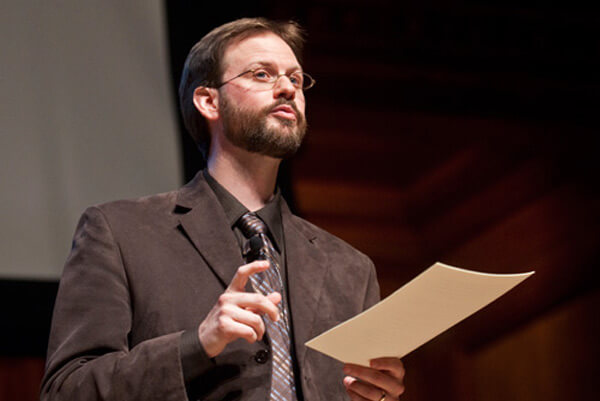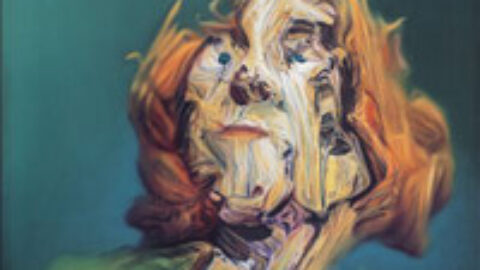 Theory and aesthetics in new music are two very, very different things. There’s what goes in to a piece of music, and there’s what comes out, and keeping the two a healthy distance apart has been the sensible option since 1908 at the latest. Music is for the listener, after all, and in a sense the question of (for instance) how Stravinsky constructed his Requiem matters precisely as little as whether or not the Monkees wrote their own songs. The complex machinations of the compositional process should never come to obscure a resulting piece of music’s aesthetic worth. At least, that’s the theory.
Theory and aesthetics in new music are two very, very different things. There’s what goes in to a piece of music, and there’s what comes out, and keeping the two a healthy distance apart has been the sensible option since 1908 at the latest. Music is for the listener, after all, and in a sense the question of (for instance) how Stravinsky constructed his Requiem matters precisely as little as whether or not the Monkees wrote their own songs. The complex machinations of the compositional process should never come to obscure a resulting piece of music’s aesthetic worth. At least, that’s the theory.
The more I’ve listened to Richard Beaudoin’s new pair of CDs Microtimings, the more I’ve started to take Beaudoin’s compositions as direct challenges to the argument above. The pieces have been constructed according to a very particular and rather strange procedure, and this procedure is, as far as I’m concerned, all but inseparable from the listening experience. Go on, the pieces seem to say: appreciate us without thinking about how we were made. Put the concept aside, and just listen to the music. You can’t, can you? No? OK then.

Microtimings contains three multi-part works, scattered across the two CDs. Disc 1 is performed by pianist Mark Knoop, and Disc 2 by the Kreutzer Quartet. The Études d’un prélude are “based on a precise transcription of Martha Argerich’s 1975 recording of Chopin’s Prélude in E minor, Op. 28, no. 4.” The Artist and his Model does something similar with Alfred Corot’s 1931 recording of Debussy’s “La fille aux cheveux de lin”, and nach Webern, nach Pollini uses Maurizio Pollini’s 1976 recording of the second movement of Webern’s Variations for Piano, Op. 27.
Approaches to the material vary. Étude d’un prélude I—Chopin desséché is a direct (piano) transcription of Argerich’s recording, simply slowed down and re-notated such that her minute rhythmic nuances and touches of rubato can be written in quavers and semiquavers. The “dessication” of which the title speaks results from only the initial attack of each note being sounded. The Artist and his Model II—La durée sans contacts s’affaiblit, for string quartet, does something similar: it slows the recording to a tenth of the original tempo but retains its detail precisely, even including the white noise.
Others are more convoluted in how they are manipulated, and the Webern/Pollini piece (all for piano) perhaps unsurprisingly draws a more abstracted approach. Movement I—Neuordnung nach Dauern retains Webern’s original rhythmic and dynamic cast for the movement, but “reorganizes all of Webern’s pitches according to their duration in Pollini’s recorded performance;” Movement III—Neuordnung nach Nautstärken does the same but with the notes’ volume rather than duration. Two of the Chopin/Argerich Études – 28four (for string quartet) and four28 (for piano) – do the same thing, or something similar, organizing material according to the duration of the recorded sounds.
A third category within these pieces includes those which have been composed rather more freely; that is, with fewer rules governing the precise placement of the notes. Oddly, though, these works are if anything more arcane than the others in terms of their structure and genesis, mostly being composed “after,” or “directly in response to,” or “as an analogue to” various paintings or photographs. I can do no better with Étude d’un prélude VIII—Kertész Distortion (for string quartet), for instance, than to quote the liner notes: the piece “was composed as an analogue to André Kertész’s photograph, ‘Distortion No. 172,’ made in Paris in 1933. The photograph is of a nude as seen in a curved mirror. The composition treats the Chopin-Argerich material in an analogous fashion, curving the time (and the pitch) just as Kertész’s mirror curved the light.” It’s a ludicrously specific and obscure brief, but the result is fascinating, and – when you’re listening for it, at any rate – you can really hear the Chopin prelude drift in and out of focus. It is, though, pretty much entirely dependent on an awareness of its concept, and attempting to listen to the work without thinking about how it is distorting its original is a very tough ask. It’s hence not just an aesthetically demanding listen: it’s also an intellectually demanding one, as it really necessitates at least an awareness of what the photograph in question is – as well, needless to say, as a more or less bar-by-bar knowledge of the Chopin prelude.
In other places, such vast amounts of necessary prior knowledge get in the way of appreciation. In the case of The Artist and his Model I—La fille floutée (for piano), the liner notes tell us only that “The piece owes a debt to Gerhard Richter’s 1994 painting ‘Lesende’.” Without being told more precisely how this debt is owed, the listening experience is an uncomfortable one; the piece is too close to the Debussy/Corot original to be appreciable as a standalone work, but too far from it to be a straight reinterpretation. And beyond the girl’s hair arguably being flaxen, the connection to Richter’s painting is simply not apparent. This problem is emblematic of what really gets in the way of the project overall: its processes are paraded so clearly as to provoke an unbecoming dependency on them. It isn’t altogether clear what anybody is meant to do with these pieces, beyond compare them to their various esoteric sources.
 On these terms, though, it’s frequently a fascinating experience. I think the second CD, which is the Kreutzer Quartet’s, is the better one musically; the extra remove created by the switch of instrumentation gives Beaudoin’s pieces more room to breathe, and the effects and distortions he draws from the instruments create a thrillingly fleshed-out portrait of the various musicians and artists involved. But in terms of performance, Mark Knoop’s rendition of the piano works stands out more: even when he is essentially just channeling Argerich, he still finds room – somehow – for a fresh interpretative stance of his own, and this is a pianistic achievement of the highest order.
On these terms, though, it’s frequently a fascinating experience. I think the second CD, which is the Kreutzer Quartet’s, is the better one musically; the extra remove created by the switch of instrumentation gives Beaudoin’s pieces more room to breathe, and the effects and distortions he draws from the instruments create a thrillingly fleshed-out portrait of the various musicians and artists involved. But in terms of performance, Mark Knoop’s rendition of the piano works stands out more: even when he is essentially just channeling Argerich, he still finds room – somehow – for a fresh interpretative stance of his own, and this is a pianistic achievement of the highest order.
Sometimes the way the CD set presents the music is less than beneficial, and though it’s aesthetically beautiful and informative at times, there is a gap between the level of information which the music seems to demand and that which it actually gives. It’s also ludicrously finicky (“The first three movements of the [Second String Quartet, made up of four Chopin/Argerich pieces] may be performed separately, as individual works. However, 28four may only be performed as the finale of the complete quartet”). I also wonder whether buyers of this CD will be more likely to get that the title four28 “refers to the late pieces by John Cage,” as the notes inform us, or to be able to read four different languages, including ancient Greek, which are included in the booklet without translation.
But while this album is (for me anyway) something of a minefield of conceptual questions, it’s also vital listening for anyone at all interested in performance analysis, recomposition, or any of the three recordings on which the pieces are based. It’s also a masterclass, from the Kreuzer Quartet and especially Knoop, in how to perform rigorous music expressively. It left me a touch more respectful than convinced, but this is hardly an album for the mass markets, and on its own terms it’s an undoubted success. This is music you have to know about to understand, but if you can live with that, it’s worth it.
Richard Beaudoin, Microtimings (New Focus Recordings, 2012) | Buy it on Amazon
—
Paul Kilbey writes on music and culture for publications including Culture Wars, Huffington Post and Bachtrack. Follow him on Twitter @paulkilbey.
























